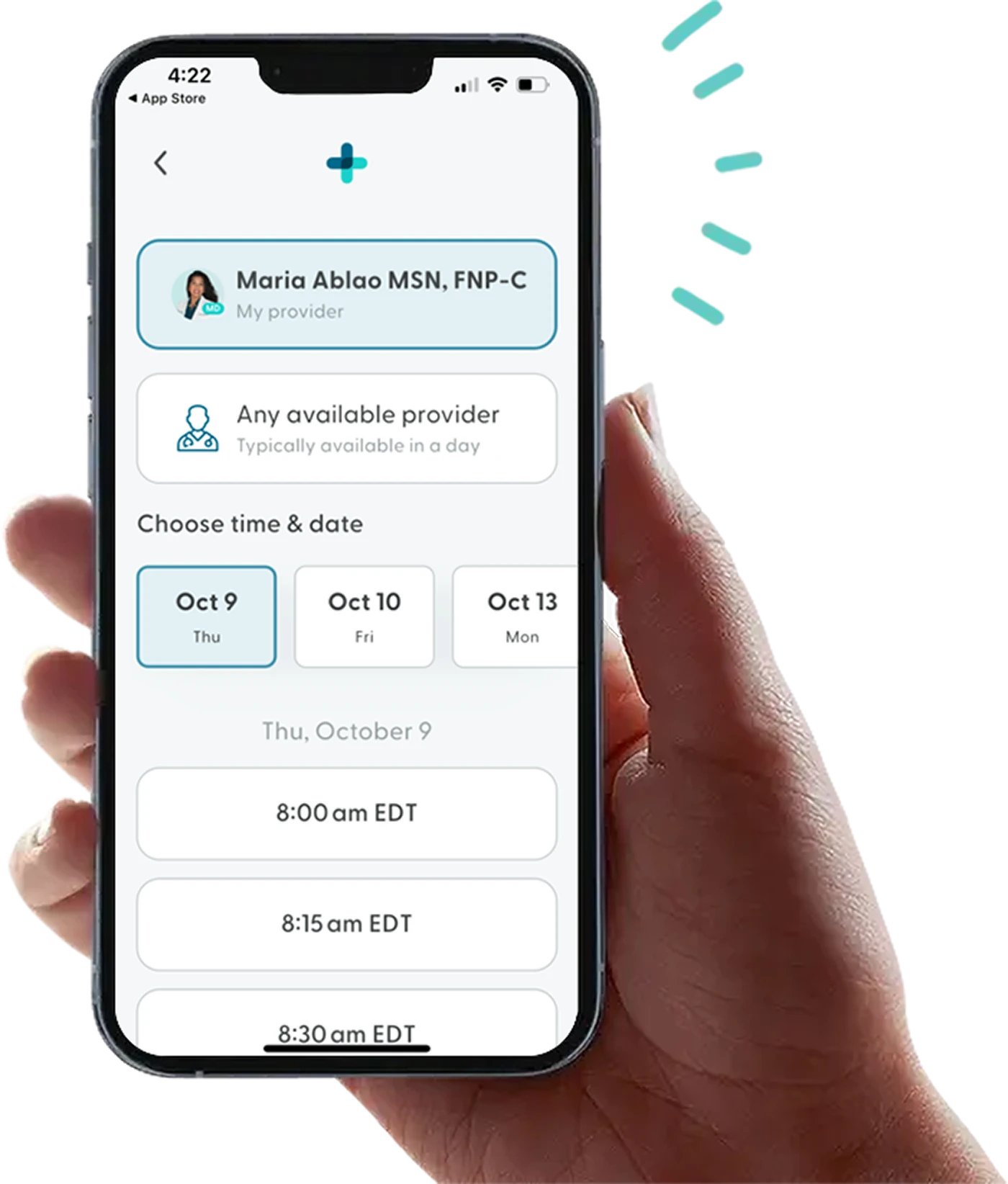What Do We Know About Oral GLP-1s?
As of September 2019, the only FDA-approved oral GLP-1 on the market has been Rybelsus (semaglutide). It was developed by Novo Nordisk, manufacturer of Wegovy and Ozempic, for the treatment of adults with type 2 diabetes.
Rybelsus remains the only oral GLP-1 on the market as of 2025, though a newer medication – like Eli Lilly’s orforglipron – is expected to join the field soon.
What are GLP-1 Medications?
GLP-1 medications – short for glucagon-like peptide-1 receptor agonists – are a class of drugs that mimic the effects of a natural hormone called GLP-1. This hormone is released after eating and plays an important role in regulating blood sugar and appetite.
When you take a GLP-1 medication, it activates the same receptors in your body that GLP-1 naturally would. This triggers several beneficial effects: it stimulates insulin release when blood sugar levels rise, reduces the amount of glucose the liver produces, and slows down digestion so glucose enters the bloodstream more gradually.
These combined effects help stabilize blood sugar levels throughout the day.
Beyond glucose control, GLP-1 drugs also act on the brain’s appetite centers to reduce hunger and promote feelings of fullness. That’s why they’re used not only for managing type 2 diabetes, but also for weight loss in people with obesity or overweight.
In short, GLP-1 receptor agonists help the body respond more effectively to meals – keeping blood sugar in check, supporting weight management, and lowering long-term risks tied to metabolic conditions.
Get prescription weight loss medication online.
Find out if you're eligible for GLP-1s, and get started on your weight loss journey for as low as $75/month.


From Injections to Pills: How Oral GLP-1s Came to Be
For many years, GLP-1 medications were only available as injectable drugs. The main reason is that GLP-1 is a peptide. This is a type of protein that the digestive system breaks down before it can enter the bloodstream. This meant that oral forms of these medications were considered nearly impossible. Any pill would simply be digested like food and rendered ineffective.
Novo Nordisk solved this problem by creating a “helper molecule” called SNAC. SNAC shields semaglutide, – the active ingredient in Rybelsus – from being broken down in the stomach. It also helps the drug get absorbed into the bloodstream, allowing it to work effectively as a pill for the first time.
Because of this development, the FDA approved Rybelsus for adults with type 2 diabetes. Following approval, Rybelsus was gradually launched in markets worldwide, offering patients a needle-free alternative to injectable GLP-1s like Ozempic and Wegovy.
This breakthrough marked a significant step forward in diabetes care, combining convenience with the proven benefits of GLP-1 therapy.
Rybelsus: The First and Only Oral GLP-1 (So Far)
Rybelsus is currently approved for treating adults with type 2 diabetes. It’s not yet approved for obesity in adults, though studies are ongoing to explore its potential in weight management. Rybelsus works the same way as Ozempic, its injectable counterpart.
Because it’s in pill form, there are a few key differences for dosing and administration of this medication, compared to GLP-1 medications. Rybelsus must be taken once daily on an empty stomach, at least 30 minutes before the first food, drink, or other medications. This timing is important to ensure the drug is absorbed properly.
The side effects of Rybelsus are similar to those of other injectable GLP-1s. Common side effects are mostly gastrointestinal, including nausea, vomiting, and diarrhea. Most are mild to moderate, but some patients may need to discontinue treatment.
Comparing Oral GLP-1s with Injections
Feature | Oral GLP-1 | Injectable GLP-1 |
Convenience | Daily pill No needles | Weekly injection |
Efficacy | Effective for blood sugar control and modest weight loss | Generally stronger results in A1c reduction and weight loss |
Onset & Consistency | Absorption can vary depending on timing and meals | Steady absorption and more predictable effect |
Side Effects | Mainly gastrointestinal (nausea, vomiting, diarrhea); slightly higher discontinuation rates at high doses | Similar gastrointestinal side effects, usually better tolerated at equivalent doses |
Accessibility & Cost | Pill form may reduce injection hesitancy but cost remains high | Often more widely prescribed; cost barriers still exist |
The Next Wave of Oral GLP-1s
Eli Lilly’s orforglipron could be a game-changer in oral GLP-1 medications. Unlike semaglutide, it’s a small molecule rather than a peptide, which means it’s easier for the body to absorb and doesn’t need dietary restrictions.
Early Phase III results show that orforglipron can lower blood sugar and support more weight loss than oral semaglutide at the doses tested so far. Eli Lilly plans to apply for FDA approval in 2026, offering a potentially more convenient and effective pill for managing type 2 diabetes – and possibly obesity in the future.
Higher-dose oral semaglutide and other developments
Novo Nordisk is developing higher-dose versions of oral semaglutide (25 mg and 50 mg) to target obesity and provide stronger blood sugar and weight loss effects. These higher doses are expected to receive regulatory approvals starting in late 2025, expanding the oral GLP-1 options beyond type 2 diabetes.
Other companies have also explored oral GLP-1s. For example, Pfizer’s danuglipron was discontinued, while several smaller biotech firms continue to test new oral GLP-1 candidates in clinical trials.
This growing pipeline means that in the coming years, more oral GLP-1 options could become available, giving patients easier, needle-free ways to manage diabetes and weight.
How Oral GLP-1s Could Shape the Future of Diabetes and Obesity Care
Oral GLP-1s have the potential to make treatment more accessible for patients who are hesitant about injections. They could also help ease supply shortages of injectable medications by providing an alternative format.
Experts predict that by 2030, oral GLP-1s could make up about half of the GLP-1 market, showing how important they’re becoming. In the future, we might also see combination pills or multi-action drugs that give patients even more ways to manage diabetes and weight.
As these medications become more widely used, it will be important to monitor their long-term safety, tolerability, and how well patients stick with the treatment in real-world settings.
What Patients Should Know
Oral GLP-1 medications can be a helpful tool, but they’re not a one-size-fits-all solution. How well they work can vary from person to person, so treatment should be individualized with guidance from a healthcare provider.
Patients should discuss several key points with their provider, including how much blood sugar or weight loss to expect, potential side effects, and how the medication fits with their daily routine.
It’s also important to remember that healthy lifestyle habits – like balanced eating and regular physical activity – remain essential. Oral GLP-1s work best when combined with these foundational strategies.
Where Can I Learn More About GLP-1s?
The LifeMD Weight Management Program offers personalized support to help you reach your weight goals. A licensed healthcare provider can work with you to determine if FDA-approved GLP-1 medications are right for your needs.
We also provide oral options other than GLP-1s for weight management. The Triple Therapy customized kit is a doctor-guided plan that combines metformin, bupropion, and topiramate in carefully selected doses to support your journey in a safe, tailored way.
With guidance and options designed around your health, you can take steps toward weight management that fit your life.
More articles like this
Feel better with LifeMD.
Your doctor is online and ready to see you.
Join LifeMD for seamless, personalized care — combining expert medical guidance, convenient prescriptions, and 24/7 virtual access to urgent and primary care.









